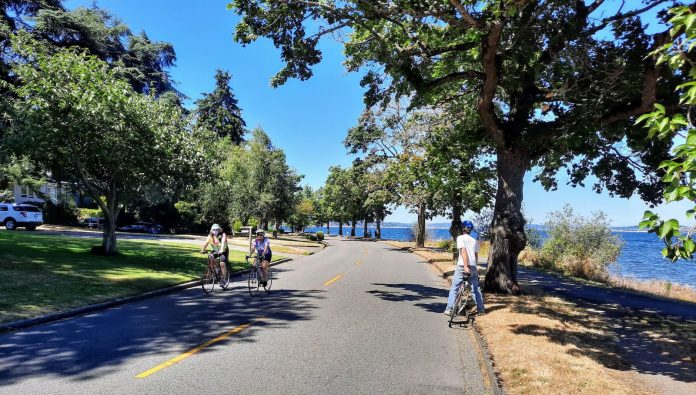The Seattle Department of Transportation (SDOT) in conjunction with Seattle Parks and Recreation has announced that Lake Washington Boulevard’s open street will be extended all the way south to Seward Park starting the weekend of July 4. Intended to provide space for people walking, biking, and rolling, the closure to through car traffic has been in place on weekends along a one-mile stretch of the street between Mount Baker Beach and Genesee Park. The three-mile version will significantly expand the open street, directly connecting Seward Park’s car-free trail with a Lake Washington Boulevard with significantly fewer vehicles on it.
However, SDOT will confine the extended open street to weekends and holidays only, returning the boulevard to cars on weekdays.
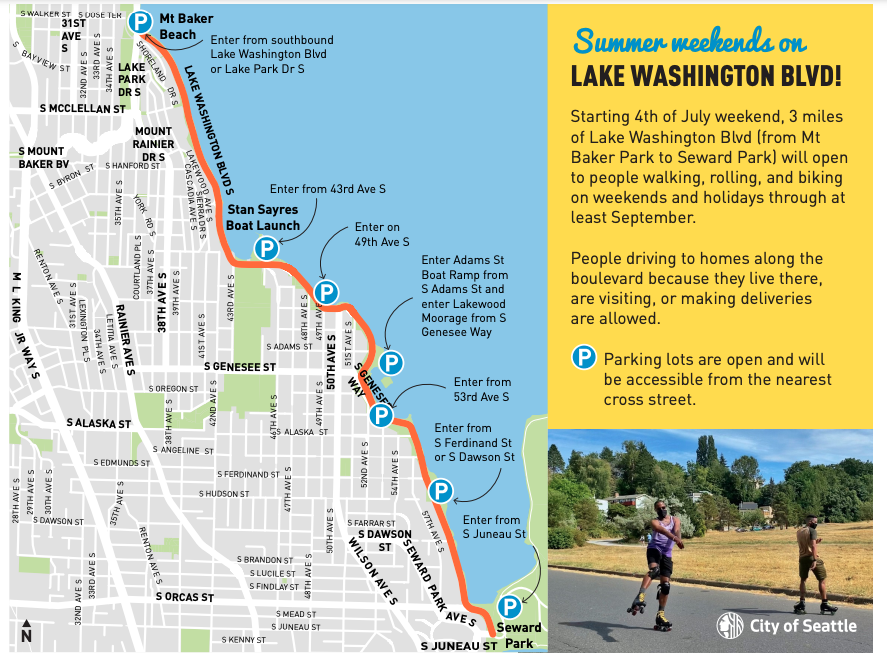
But the final proposal differs from the result of SDOT’s survey of nearly 7,000 Seattle residents in which approximately 65% of respondents said their first choice for Lake Washington Boulevard was a three-mile option every day of the week. Adding in people who said it was their second choice, seven out of ten respondents rated having an open street every day of the week very highly. The weekends-only option only received a top ranking from a little over 20%.
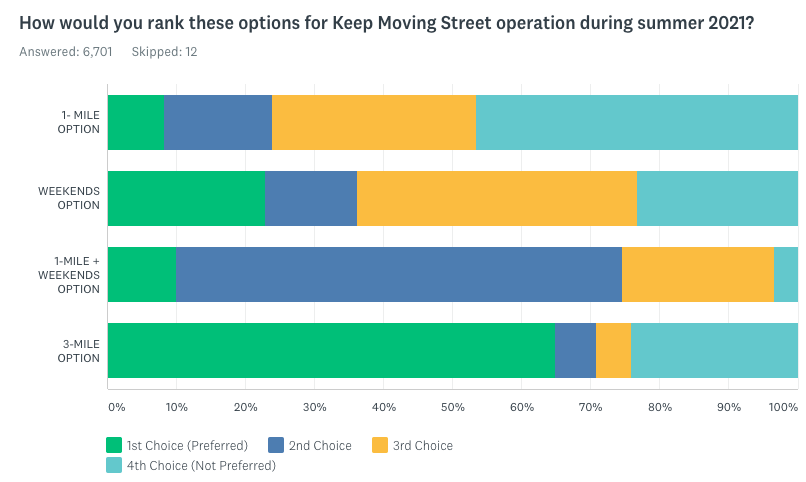
SDOT also provided a breakdown of results in the 98118 zip code, which includes the area of the Rainier Valley between Columbia City and Rainier Beach and would include the southern segment of the Lake Washington Boulevard open street. Results from those respondents, who amounted to about 33% of the total people who completed the survey, were very similar. Over 50% of people in the 98118 zip code also said the three-mile option at all times was their first preference.
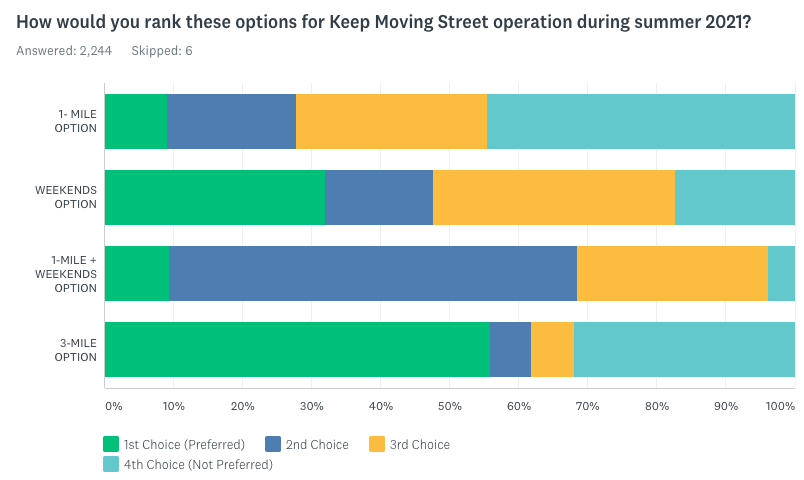
According to SDOT, they evaluated the survey results along with Seattle Parks and Recreation and “weighted” the results based on other criteria, including equity (25%), community and stakeholder input (25%), safety and health (20%), access (20%), and implementation (10%). But how those criteria produced the result we have now is a black box.
SDOT says the weekend open street “maintains vehicle access during typical commute hours,” which of course ignores the people who would use the open street to commute by rolling or walking during those typical commute hours as well as people who don’t have weekends off to be able to use Lake Washington Boulevard for recreation. When the street is open to vehicles, the boulevard’s adjacent path is not accessible to everyone who might want to use the street. Traffic diversion during the 2020 version of the Lake Washington open street, which did extend the full three-miles on weekdays, did not create significantly higher levels of traffic on most alternate routes.
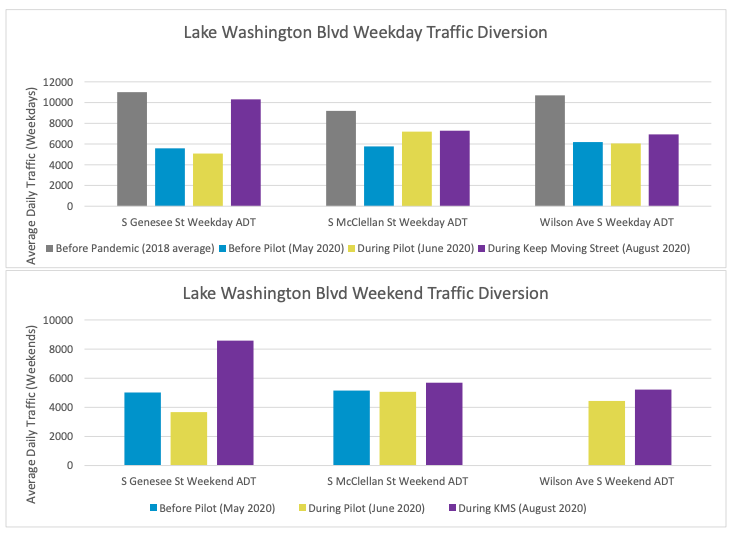
The survey results as they compare to the result as announced today suggest that an open street on Lake Washington Boulevard seven days a week was never on the table at all, at least insofar as the program would have to get through a Durkan administration that has shown itself happy to water down active transportation programs whenever it’s convenient. But if the administration was prepared to throw away the results of the survey, it probably shouldn’t have conducted it in the first place.
This weekends-only closure will extend through the entirety of September, with a possibility for an extension into October depending on usage. The long-term future of Lake Washington Boulevard a both a park and an arterial street certainly won’t be decided by the current mayor, and hopefully the next mayor is more interested in transforming public spaces than the current one is.
Ryan Packer has been writing for The Urbanist since 2015, and currently reports full-time as Contributing Editor. Their beats are transportation, land use, public space, traffic safety, and obscure community meetings. Packer has also reported for other regional outlets including BikePortland, Seattle Met, and PubliCola. They live in the Capitol Hill neighborhood of Seattle.

